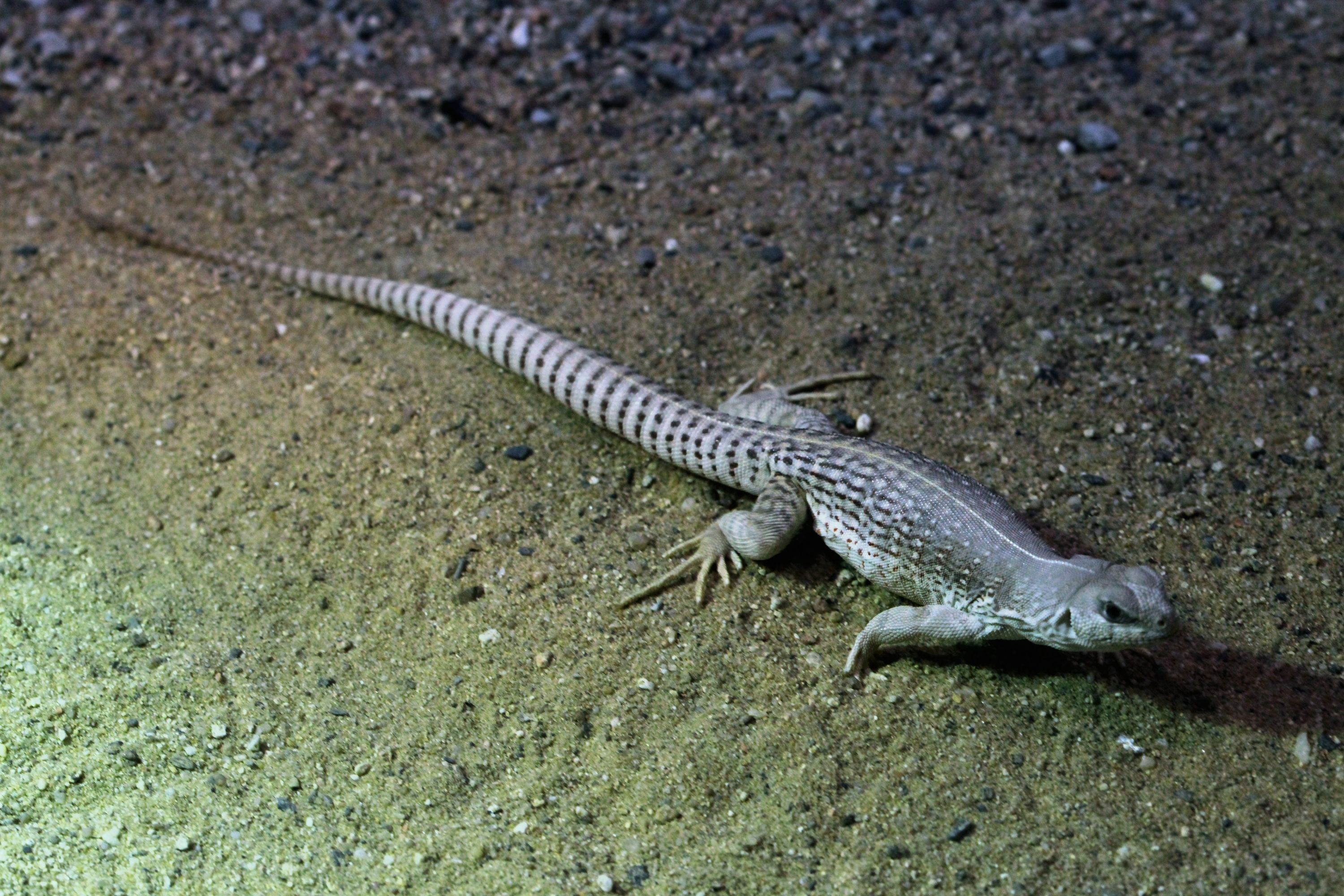Desert iguana
(Dipsosaurus dorsalis)

Description
The desert iguana (Dipsosaurus dorsalis) is an iguana species found in the Sonoran and Mojave Deserts of the Southwestern United States and northwestern Mexico, as well as on several Gulf of California islands. The desert iguana is a medium-sized lizard which averages 41 cm (16 in) in total length but can grow to a maximum of 61 cm (24 in) including the tail. They are pale gray-tan to cream in color with a light brown reticulated pattern on their backs and sides. Down the center of the back is a row of slightly-enlarged, keeled dorsal scales that become slightly larger farther down the back. The reticulated pattern gives way to brown spots near the back legs, turning into stripes along the tail. The tail is usually around 1½ times longer than the body from snout to vent. The belly is pale. During the breeding season, the sides become pinkish in both sexes. Their preferred habitat is largely contained within the range of the creosote bush, mainly dry, sandy desert scrubland below 1,000 m (3,300 ft). They have a significant presence in the Sonoran and Mojave deserts. They can also be found in rocky streambeds up to 1,000 m. In the southern portion of its range, these lizards lives in areas of arid subtropical scrub and tropical deciduous forest. These lizards can withstand high temperatures and are out and about after other lizards have retreated into their burrows. They seek shade when their body temperature is in the low-forties (celsius), and seek the protection of a burrow when their body temperature reaches the mid-forties (Celsius). They burrow extensively and if threatened will scamper into a shrub and go quickly down a burrow. Their burrows are usually dug in the sand under bushes like the creosote. They also often use burrows of kit foxes and desert tortoises. Reproduction also plays a role in where these lizards are found. It is believed that the high temperature environment helps with successful hatching of eggs. The eggs often hatch between temperatures of 28 and 38 degrees Celsius.
Taxonomic tree:







